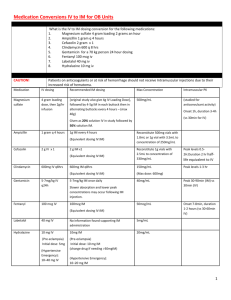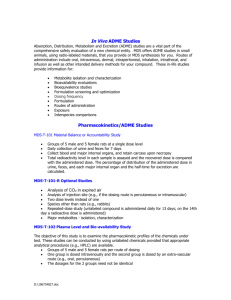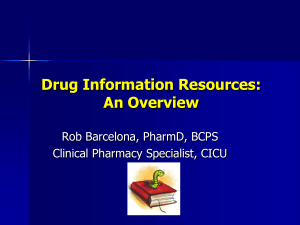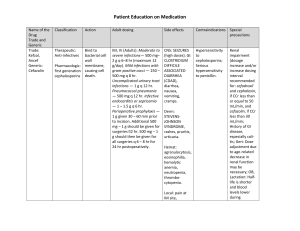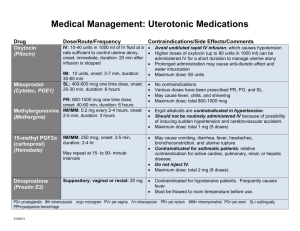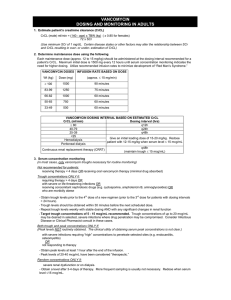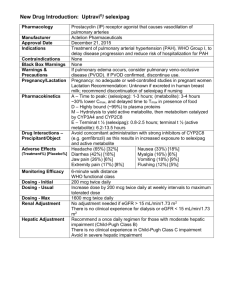Extended Dose Aminoglycoside Therapy Guidelines
advertisement
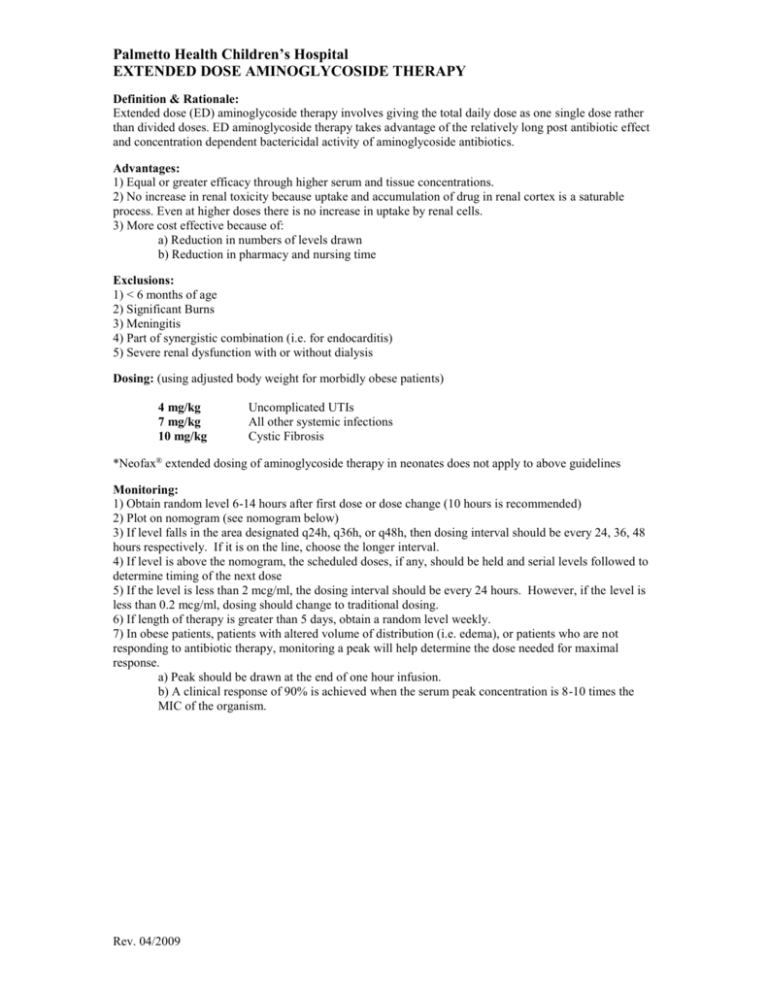
Palmetto Health Children’s Hospital EXTENDED DOSE AMINOGLYCOSIDE THERAPY Definition & Rationale: Extended dose (ED) aminoglycoside therapy involves giving the total daily dose as one single dose rather than divided doses. ED aminoglycoside therapy takes advantage of the relatively long post antibiotic effect and concentration dependent bactericidal activity of aminoglycoside antibiotics. Advantages: 1) Equal or greater efficacy through higher serum and tissue concentrations. 2) No increase in renal toxicity because uptake and accumulation of drug in renal cortex is a saturable process. Even at higher doses there is no increase in uptake by renal cells. 3) More cost effective because of: a) Reduction in numbers of levels drawn b) Reduction in pharmacy and nursing time Exclusions: 1) < 6 months of age 2) Significant Burns 3) Meningitis 4) Part of synergistic combination (i.e. for endocarditis) 5) Severe renal dysfunction with or without dialysis Dosing: (using adjusted body weight for morbidly obese patients) 4 mg/kg 7 mg/kg 10 mg/kg Uncomplicated UTIs All other systemic infections Cystic Fibrosis *Neofax® extended dosing of aminoglycoside therapy in neonates does not apply to above guidelines Monitoring: 1) Obtain random level 6-14 hours after first dose or dose change (10 hours is recommended) 2) Plot on nomogram (see nomogram below) 3) If level falls in the area designated q24h, q36h, or q48h, then dosing interval should be every 24, 36, 48 hours respectively. If it is on the line, choose the longer interval. 4) If level is above the nomogram, the scheduled doses, if any, should be held and serial levels followed to determine timing of the next dose 5) If the level is less than 2 mcg/ml, the dosing interval should be every 24 hours. However, if the level is less than 0.2 mcg/ml, dosing should change to traditional dosing. 6) If length of therapy is greater than 5 days, obtain a random level weekly. 7) In obese patients, patients with altered volume of distribution (i.e. edema), or patients who are not responding to antibiotic therapy, monitoring a peak will help determine the dose needed for maximal response. a) Peak should be drawn at the end of one hour infusion. b) A clinical response of 90% is achieved when the serum peak concentration is 8-10 times the MIC of the organism. Rev. 04/2009 Rev. 04/2009


